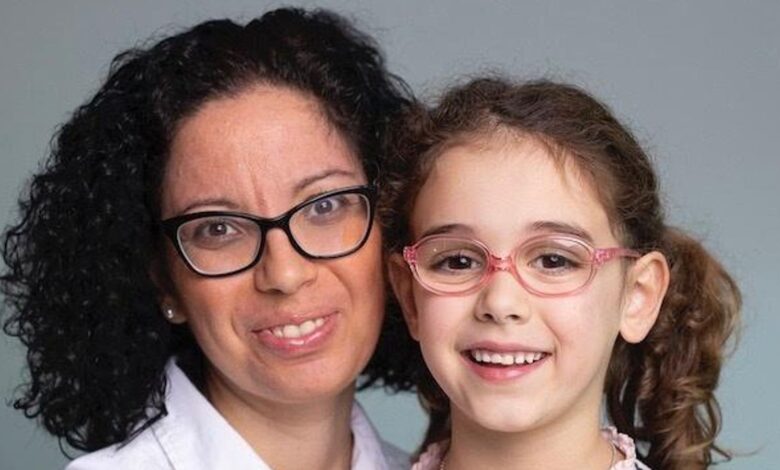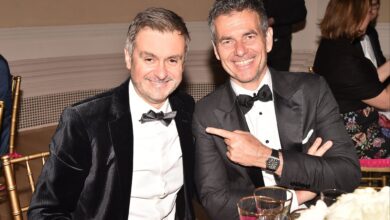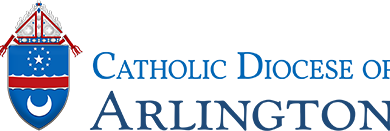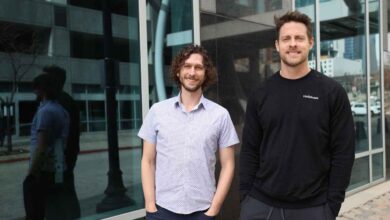The Determined Entrepreneur With Her ‘Eyes On The Future’

Silvia Cerolini and her daughter Vicky
For some people, having a loved one affected by a disease for which there is no cure can become a catalyst to do whatever it takes to try to find a solution. Some succeed in launching the startup that could make their aspirations a reality. However, such a venture comes with a myriad of challenges, from convincing investors to provide the funding they need, to building the right team to help make it happen.
Silvia Cerolini is the mother of 10-year-old Vicky who is affected by RDH12 inherited retinal dystrophy, which leads to substantial vision loss later in life. Moved by a simple promise to ‘do everything to save Vicky’s sight’, Silvia and her husband Enrico started Eyes on the Future, a not-for-profit organization, to bring a therapy to those affected by Vicky’s condition as soon as possible.
She says: “Vicky is super resilient and super strong, personality-wise, but she is now legally blind. Her sight will continue to deteriorate because right now there is no treatment. Youngsters with her condition are usually fully blind by their late teens to early 20s. The first six months after the diagnosis were really hard, but Enrico and I decided that we could either simply wait for this to happen or we could try to do something about it.”
In search of a treatment
Initially launched in 2017 as ‘Through Vicky’s Eyes’ as a fundraising and advocacy campaign to help to find a treatment for Vicky and kids like her, in 2022, Eyes On The Future was incorporated officially as a charity in the U.K. Its mission is to raise funds to help the research on rare diseases, eye diseases and inherited retinal disease with a focus on the gene RDH12, to raise awareness and bring together a global community.
Cerolini had enjoyed a long career in FMCG, working in the data innovation analytics space, while her husband worked in finance, both careers far removed from the world of science and the not-for-profit sector. “Overnight we were thrown into the world of rare diseases,” she says. “And we were starting from zero, reading every single article we could find online.”
The benefits of business acumen
The advantage they both had, was that coming from the commercial world, they were able to apply a business mindset and managerial competencies to a problem in a world of rare disease research, that is still developing in terms of business competency. And they needed those skillsets because of the challenges of securing funding for rare diseases.
“It was tough, and being taken seriously at the beginning was hard,” says Cerolini. “Initially, we leveraged our network and started with the absolute basics, from bake sales to asking family and friends. As our fundraising became more sophisticated, we leveraged crowdfunding, organized regional fundraising events, and secured a £300,000 grant from a U.K. family trust. We went on to present at conferences, got the head of ophthalmology at the FDA on board, and became a best-in-class example of a patient-driven partnership.”
She also made a dramatic career move from retail into pharmaceuticals, becoming head of innovation specialty care at Sanofi, because she wanted to understand that world from the inside. “Rare diseases are rare in isolation,” she says. “My daughter’s condition affects a few thousand children in the Western world. But as a whole, one in 15 people are affected by rare diseases and 95% of rare diseases don’t have a treatment.”
Global alliance
As well as being CEO and trustee of the U.K.-based Eyes on the Future, Cerolini coordinates a global RDH12 Alliance, comprising sister non-profits based in the U.S., and in Belgium. Collectively the group has raised around $5 million, which has been invested mainly in academic projects and the support of early work around therapeutic areas, including gene therapy.
“With the work that has been done over the last few years, we are ready to move to a clinical trial,” says Cerolini. “The challenge now is for the companies working on our condition to raise the funding they need. I’m confident that at some point, we’re going to find the solution, but right now it’s all about moving into the next phase of clinical development.”
She is also determined to move to the next level and look at partnering directly with industry to develop new models for channeling philanthropic funding to pay for clinical development and to innovate from a risk revenue sharing perspective. “We can be a blueprint for many more medical conditions,” she says. “It is so motivating to know that we can pave the way forward for others.”
Funding criteria
Their approach and entrepreneurial journey has been quite unusual as Jacqueline Kosecoff, managing partner at Moriah Partners, who works in private equity to identify, select, mentor and manage health services, life sciences and IT companies, explains.
She says that while many people are attracted to a career in health care or life sciences due to their experience with healthcare for themselves or their families, it is less common to see an investment where the founder is committed to creating a healthcare company but has little or no experience in the sector or prior knowledge of how to build a business.
“When I’m assessing an investment, the competence of the CEO is more important than their motivation,” says Kosecoff. “The most important investment factors include whether the business addresses an important problem, the size of the market opportunity; whether the strategy and business plan are well thought out and are likely to succeed; whether there is evidence that the business has clients and both the top line and bottom line are growing; the competence and track record of the management team; and an understanding of the competitive and regulatory environment.”
Next stage growth
Eyes on the Future is currently run by a team of trustees, all volunteers. To take her vision to the next stage, Chris Coe, senior partner, life sciences practice at global executive search firm Kingsley Gate, recommends that Cerolini considers two key roles.
“Firstly, an experienced Chair will act as a guiding light and help her to articulate the scientific value proposition necessary for a future-ready business,” he says. “Secondly, the appointment of a chief scientific officer (CSO) or head of R&D will help her to attract and unlock the capital required for a strong growth infrastructure.”
Moving from the hectic environment of a cash-strapped, early-stage company usually requires a change of mindset. For example, when it comes to building the team a mixed model which includes flexible senior interims who can address key strategic issues, as well as permanent employees is a real asset.
“As the business structure becomes more clearly defined and the roles that are required emerge, it will be important to develop an organizational design plan which outlines the key functions and potential resourcing gaps,” adds Coe. “Factoring in a reserve that’s realistically aligned with the projected use of capital will also be helpful and finally, the founder also needs to be prepared to delegate far more as the business grows.”



